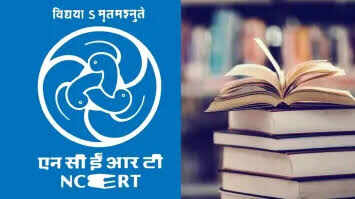Under the new National Education Policy (NEP) and National Curriculum Framework (NCFSE) 2023, there has been a major change in the new NCERT new textbooks issued for class 7. Now all the references related to the Mughals and the Delhi Sultanate have been completely removed from these books. At the same time, Indian traditions, religious places and modern government initiatives have been linked to prominently. These amendments have also given rise to debate across the country, where on the one hand it is being described as an initiative to increase the pride of Indianness, on the other hand, some are considering it to be a step towards saffronisation of history.
Large change in history: Mughals and Sultanate erased
There is no mention of the Mughals and the Delhi Sultanate in the new social science book “Search: India and beyond”. Earlier textbooks were described in detail the rule of dynasties like Mamluk, Khilji, Tughlaq and Lodi. Even when the syllabus was rationalized during the Kovid-19 epidemic, the material related to the Mughals was shortened, but now all their references have been removed.
Earlier, students were given two dorsal tables of the achievements of Mughal emperors, but now they will be taught chapters of Indian ancient dynasties like Magadha, Maurya, Sung and Satavahana dynasty. Books are now focused on Indian ethos, cultural values and traditions, underlining the achievements of ancient India.
‘Holy Geography’ and new chapter focused on pilgrimage sites
A new chapter called “how Bhoomi becomes holy” has been added to the new textbook. It has introduced various sacred sites of India and the world. Detailed description of 12 Jyotirlinga, Char Dham Yatra, Network of Shaktipeeths and Sangam sites are presented. Along with this, river confluence, mountains and forests are also described as a holy site.
This chapter also contains religious diversity, which also mentions the sacred sites of Hinduism as well as Islam, Christianity, Judaism, Parsi religion, Buddhism and Sikh religion. This chapter tries to reveal the ancient tradition and religious tolerance of the pilgrimage of India.
A famous quotation of Pandit Jawaharlal Nehru has also been added here, in which he called India the land of a pilgrimage sites – from the snowy peaks of Badrinath and Amarnath to the beach of Kanyakumari.
Mahakumbh’s grand mention, but silence on disputes
The new books also mention the Mahakumbh Mela held in Prayagraj, in which it was told how about 660 million people participated in the event. Mahakumbh has been described as a symbol of Indian religious and cultural pride. However, there is no mention of the stampede and 30 pilgrims killed in it during this period.
Regarding this move, some experts have raised the question whether it is enough to show only grandeur to children or should the overall view of historical events be presented?
Conclusion of contemporary government initiatives
The new textbooks also mention major initiatives of the central government such as ‘Make in India’, ‘Beti Bachao, Beti Padhao’ and ‘Atal Tunnel’. Students have been told how these initiatives are contributing to the creation of modern India.
Apart from this, a separate chapter has also been given on the Constitution of India. It states that there was a time when citizens could not hoist the national flag in their homes. In 2004, a citizen challenged it in court, after which the Supreme Court allowed it to hoist the tricolor, considering it a part of freedom of expression. This incident has been linked to the aim of awakening a sense of respect and pride in children.
Big change in English textbooks too
Not only Hindi, significant changes have been made in English textbooks. The new English book called “Eastern” has nine Indian writers’ compositions or based on Indian themes and characters. These include the compositions of legendary writers like Rabindranath Thakur, APJ Abdul Kalam and Ruskin Bond.
The erstwhile textbook called “Honeycomb” had 17 compositions, of which only four were Indian writers. It is clear from this that now Indian literature and culture is being given priority.
Political disputes and criticisms
Opposition parties have made these changes made by NCERT a subject of rapid criticism. The opposition has described it as an attempt towards the “saffronisation” of history. They allege that an important period of history is being deliberately hidden from students.
NCERT director Dinesh Prasad Sakalani said in an interview given last year that teaching young children about riots like riots can create negative thinking in his mind. For this reason, such subjects have been removed in books.
According to him, the purpose of education should be to prepare positive citizens who are proud of their country and its legacy, not entangle in the history of hatred and violence.
Opinion of academics and experts
Education experts believe that the change in the course is the demand for times, but it should be balanced and fair. Some experts argue that it is necessary to give a diverse approach in history, so that students can develop independent thinking. At the same time, some believe that more attention to Indian traditions and heritage is a strong medium to strengthen national identity.
Changes in new textbooks of NCERT are undoubtedly with large and far -reaching effects. This change is an attempt to give a new direction in the field of education, which emphasizes on establishing Indian knowledge, traditions and culture. However, removing some important chapters of history in this process and ignoring contemporary controversial aspects will remain a matter of prolonged debate.
Now this coming time will tell whether this change will bring a positive revolution in the Indian education system or will increase the new generation with incomplete history.
